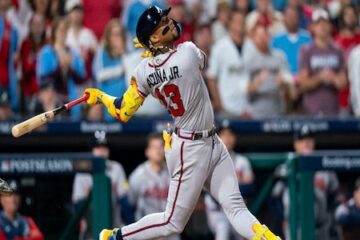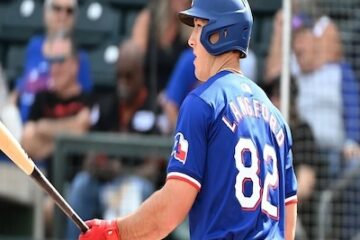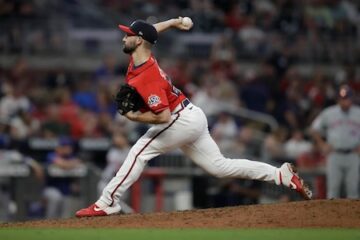Fantasy Baseball Tips of the Trade: Part One

Pulling off a fantasy baseball trade during the season can sometimes be a laborious task, but if owners are willing to put together a worthy offer for their opponents, the process is not only enjoyable, it could be beneficial for your and your opponent’s’ roster either in the short or long-term, or both.
I’d love to call this piece something along the lines of “Rules of the Trade” to go along with my “Tools of the Trade,” but the word “rules” seems a little too stiff for me. Not all leagues, formats, players are created equal, so we as owners need to recognize this and be able to adapt our strategy to meet the needs of each said league. Therefore, I think I’m just going to call this “Tips of the Trade” and run down some of the steps I take when looking to make a deal.
To be honest, this effort will likely be the first of a series of pieces we put together here at TheFantasyFix.com to let you know how we approach this aspect of the fantasy baseball game. As always, enjoy. And if you have any feedback, please let me know in the comments.
Know the players, history of your league
Whether you’ve been in your league since its inception or you’re a new owner taking over an abandoned team, it’s important to get to know your opponents and their tendencies. This is a concept better suited for keeper or dynasty type formats, but can be applied to redraft leagues as well.
I recently took over a dynasty team in Ottoneu, a 12-team 40-man roster league with a bunch of sharks like Eno Sarris, Jeff Erickson/Peter Schoenke, Andy Behrens, Andy Andres, Tim Heaney and Chad Young among others. While I’m very familiar with these folks due to their presence in the fantasy sports community, I’ve only had the pleasure of being in a league with Sarris in the past. So the first thing I did was look back at the historical information of the league to see if I could identify any trends with respect to their auctions or past trades. This could provide me with an idea of the type of players they tend to draft, the type of trades they’ve been willing to make and potentially the direction in which they’re trying to take their team if in a dynasty league. Also, you may be able to identify teams that are more willing to make deals and take chances simply by the frequency in which they’ve traded in the past.
Additionally, if you’re playing with friends, you probably know where they’re from and what teams are among their favorites to follow. There’s a guy in one of my home leagues that always tends to have a couple of Mets on his team. So, I know if I’m able to get my hands on a guy from the Mets during the draft or early in the season that turns into something nice and shiny, I’m sure to float his name to that opponent during the season to gauge his interest — if the player makes sense for him, obviously. If you don’t know the players, get to know them. Find out what city they live in. Find out their favorite team. Follow them on Twitter. Anything. It’s not always the case, but many players enjoy having one of their favorite players from their hometown or favorite teams on their fake roster. You may be able to use this to facilitate trade talks at some point during the season.
Lastly, combine what you know about your opponents tendencies and their rosters. Look back to see when owners acquired certain players and/or what they invested in certain players. This will give you some insight into how they value guys on their team. For example, I’m in the midst of rebuilding the Ottoneu team I spoke about previously. I took over a team with salary cap, age and performance issues. I’m attempting a complete gut of the roster, but it’s not easy and the league knows what I’m up to, It’s no secret.
So, Behrens shoots me a note looking to see what it would take to acquire some players to add depth to his team and pad his almost 20 point early season lead. I then dug through his roster and identified a couple of players that could be of interest based on my goals. Then, I looked at the history of those players and found that he not only won those players in auction, he won them some time ago and hasn’t let them out of his sights since. It also may or may not be a coincidence that these players play in the city in which he resides. In conclusion, I was able to know that this owner has an extremely high valuation of those players and it would cost me an arm and a leg if I hoped to acquire them. And I respect that, because I have some of those players on my roster too. Unfortunately for me, I’m new to the league and wasn’t around for the auctions on many current players of interest, so I’d either have to overpay to acquire them or simply wait for the next best thing.
On a side note, if you happen to be playing with folks within the fantasy baseball industry, take a look at who they’re writing or tweeting about. Many times you can get some indirect insight into players they’re interested in or hold in high (or low) regard. You have to dig. Do your research. Know your league. Know your opponents.
Communication
Communication is definitely one of the most important parts of a trade. If you approach someone in the wrong way, they may not want to deal with you anymore, even if it could help out their team. Instead of sending out a low-ball trade offer, I typically send potential trade partners a note through the league, an email or even direct message on Twitter. In said email, I’d introduce myself if you don’t already know them, indicate the purpose of your communication, invite them to provide feedback and thank them for their time. Be sure to tell them what you’ve learned about their team based on their needs and how you could potentially help them improve or achieve their goals via your assets.
Sounds like common sense, right? Well, it is. The object here is to build business type relationships with your league mates in case you need to do business with them now or in the future. You don’t want to pester — which I can be guilty of sometimes, because I’m constantly on the lookout for ways to improve my teams — or insult anyone’s intelligence. Times have changed. Most players are well-informed nowadays. The best way to get the ball rolling is not to send a low-ball offer and hope for someone to slip and press “accept” or hope for a counter offer, it’s by sending an email or note to gauge one’s interest. It’s a simple and respectable way to start the trade proposal process.
Lastly, keep your trade block up-to-date. This could help other owners identify the players available on your team and the holes you’re looking to fill. Help other owners send offers that accurately meet your needs instead of them offering you nonsense bench fillers — although, that could help sometimes as well.
That’s a decent start. Tomorrow I’ll be back with a few more tips on how to approach trades in your season-long formats.
If you have any specific trade questions regarding players or strategies, leave a note below.







2 Comments
You are still providing your “Tools of the Trade” today correct?
The trade chart will be published tomorrow (Thursday). Thanks, John!